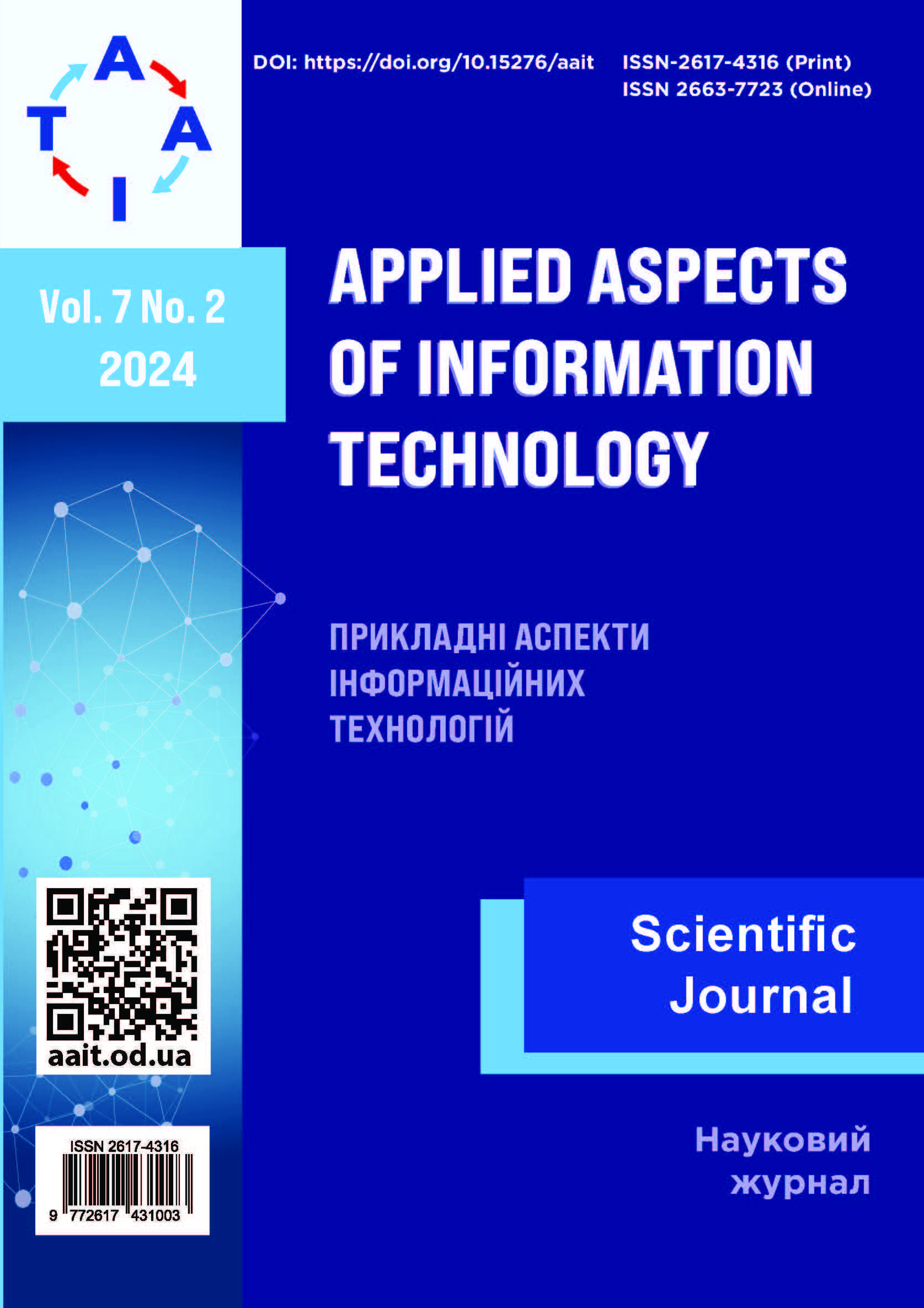Information model of acoustic string musical instrument and method of automated professional tuning of instruments
DOI:
https://doi.org/10.15276/aait.07.2024.8Keywords:
Automated tuning, professional tuning, acoustic instrument, string instrument, electronic tuner, acoustic signal, sound characteristic, inharmonious vibration, overtone beats, information model, model parameters, tuning methodAbstract
The article discusses the issue of automating the tuning of acoustic string musical instruments. The goal of the work is to formalize the characteristics of acoustic signals that must be taken into account during automated professional tuning of instruments and to develop a corresponding information model and method based on it. The importance of automating the process of tuning musical instruments is substantiated. A review of the historical development of hardware and software tuning tools and available literature sources is carried out. The analysis showed that although the existing solutions are quite effective in terms of time spent, their use does not lead to the best results of tuning. In particular, this is due to the use of approximation methods, which as a result has a bad effect on the accuracy of the latter and contradicts the main tuning goal and the entire study. A review of available mobile tools for
automated tuning of various acoustic instruments showed that none of them take into account the important tuning characteristics of the instruments. In the case of keyboard instruments, each tone has up to several strings, each of which produces a specific sound that can be resolved into a spectrum of harmonics (partials). In turn, each harmonic has its own characteristic frequency, intensity and duration of sound. Typically, in the considered analogues, instruments are tuned by determining the frequencies of the first harmonics according to equal temperament. As a result, a general model of an acoustic stringed musical instrument is proposed, represented by a six-tuple: a tonal composition of the instrument, a number of keys or open strings of the instrument, a tuple of first tone indices in chorus ranges with the same number of strings, a concert pitch and indices of temperament and temperament key. In the case of keyboard instruments, each tone has up to several strings, each of which produces a specific sound that can be resolved into a spectrum of harmonics (partials). In turn, each harmonic has its own characteristic frequency, intensity and duration of sound. This makes it possible to take into account additional characteristics and parameters that are important for application, such as the ratio of the frequencies of the partial tones of the signal, the frequencies of their interference beats, the instability and inharmonicity of string vibrations, and a method that describes the iterative process of automated tuning of instruments at a professional level based on overtone beats.










